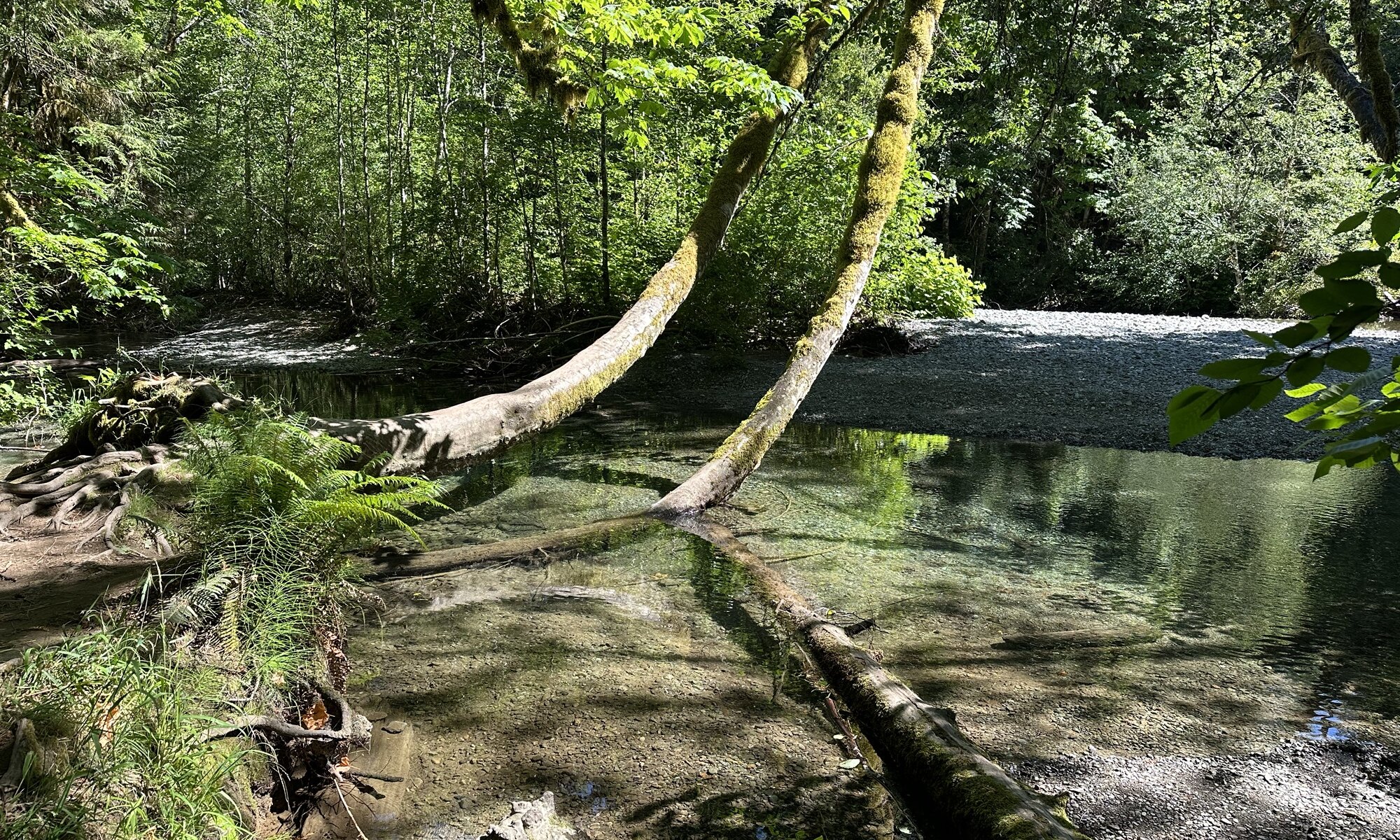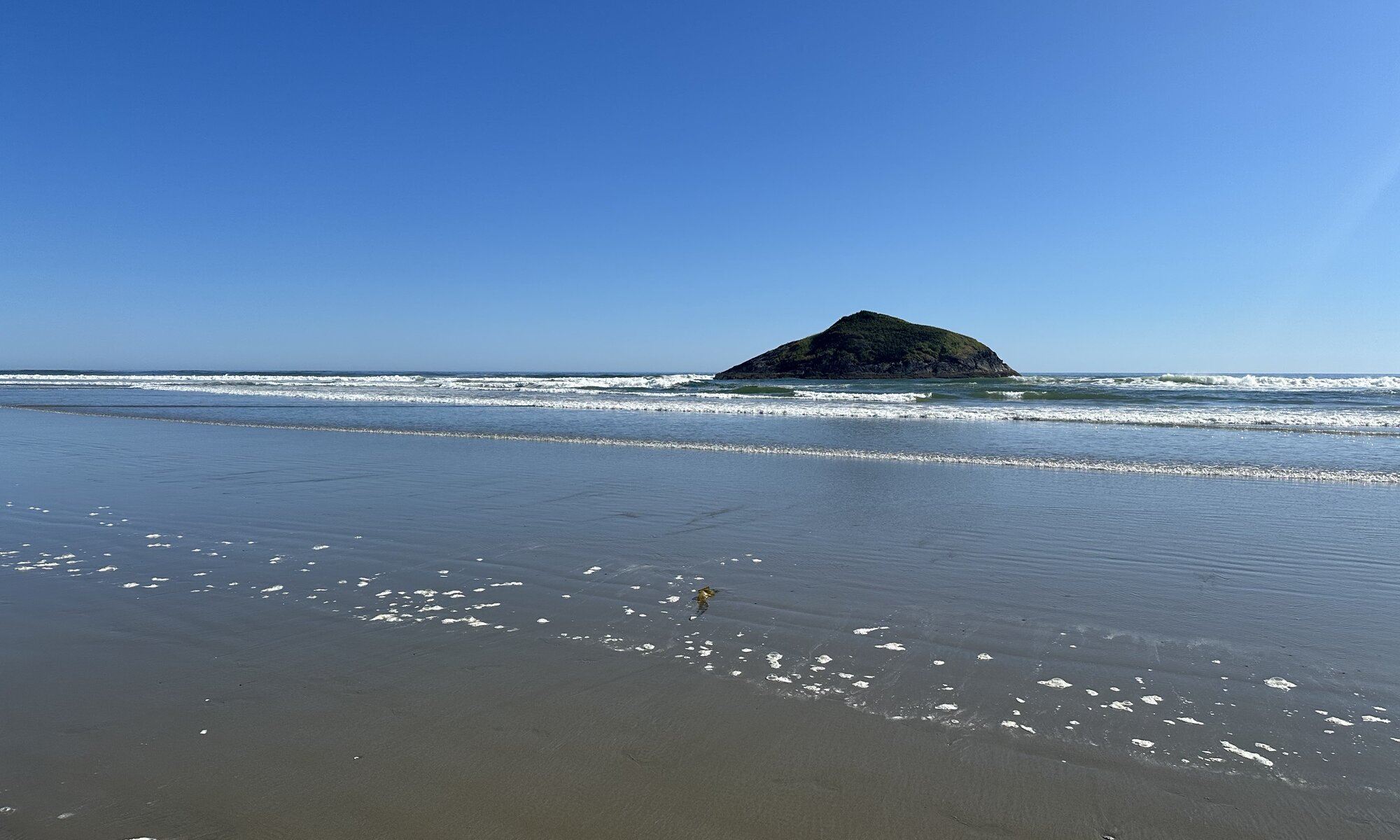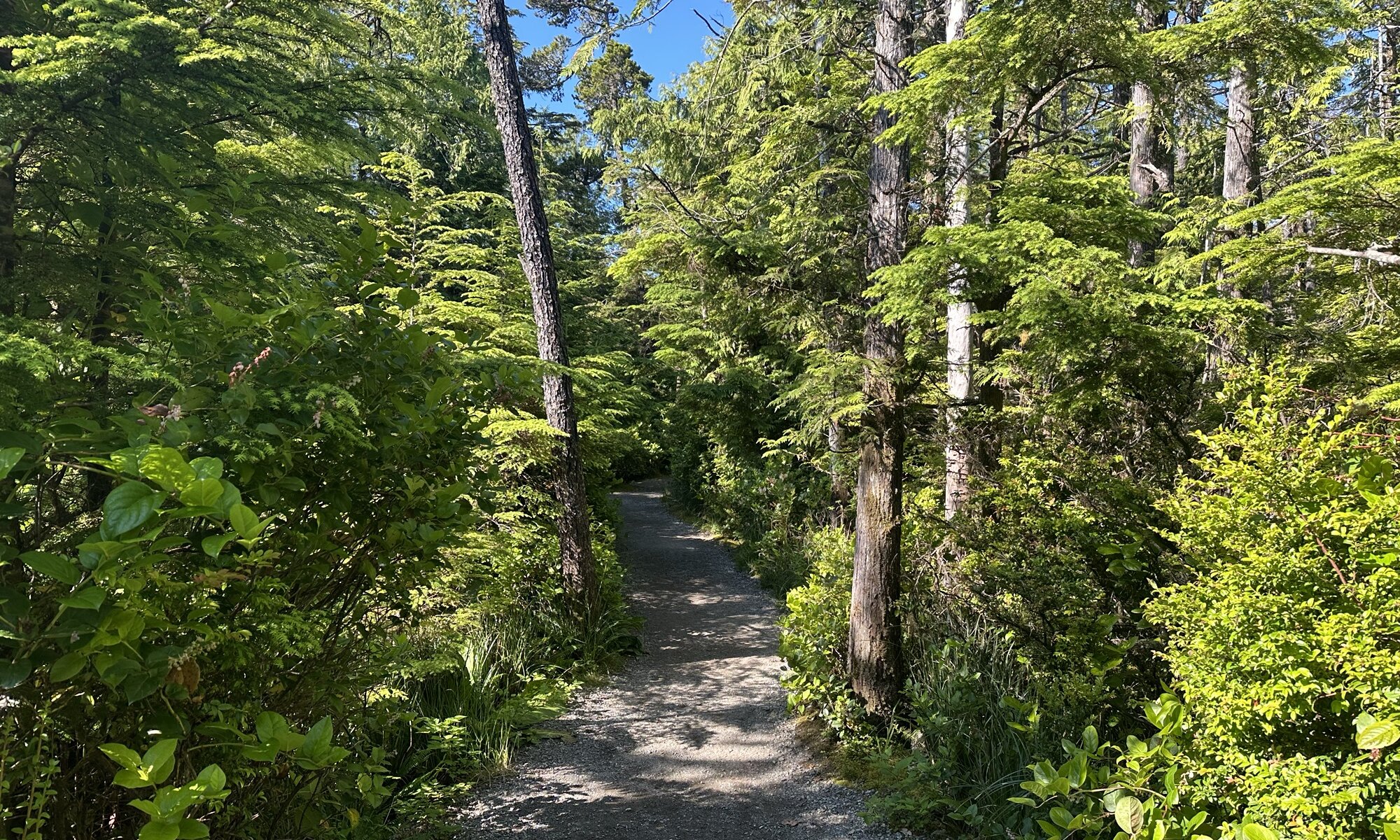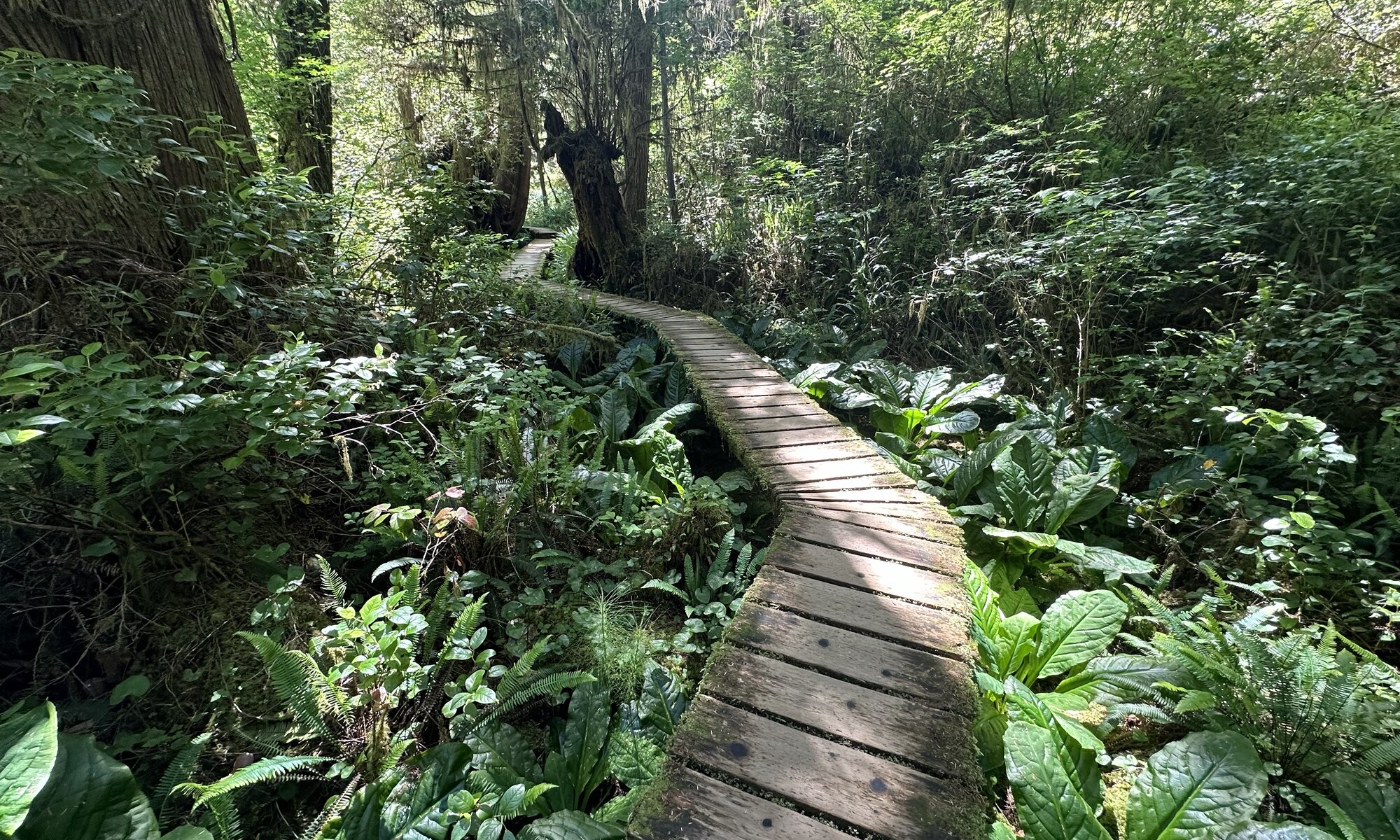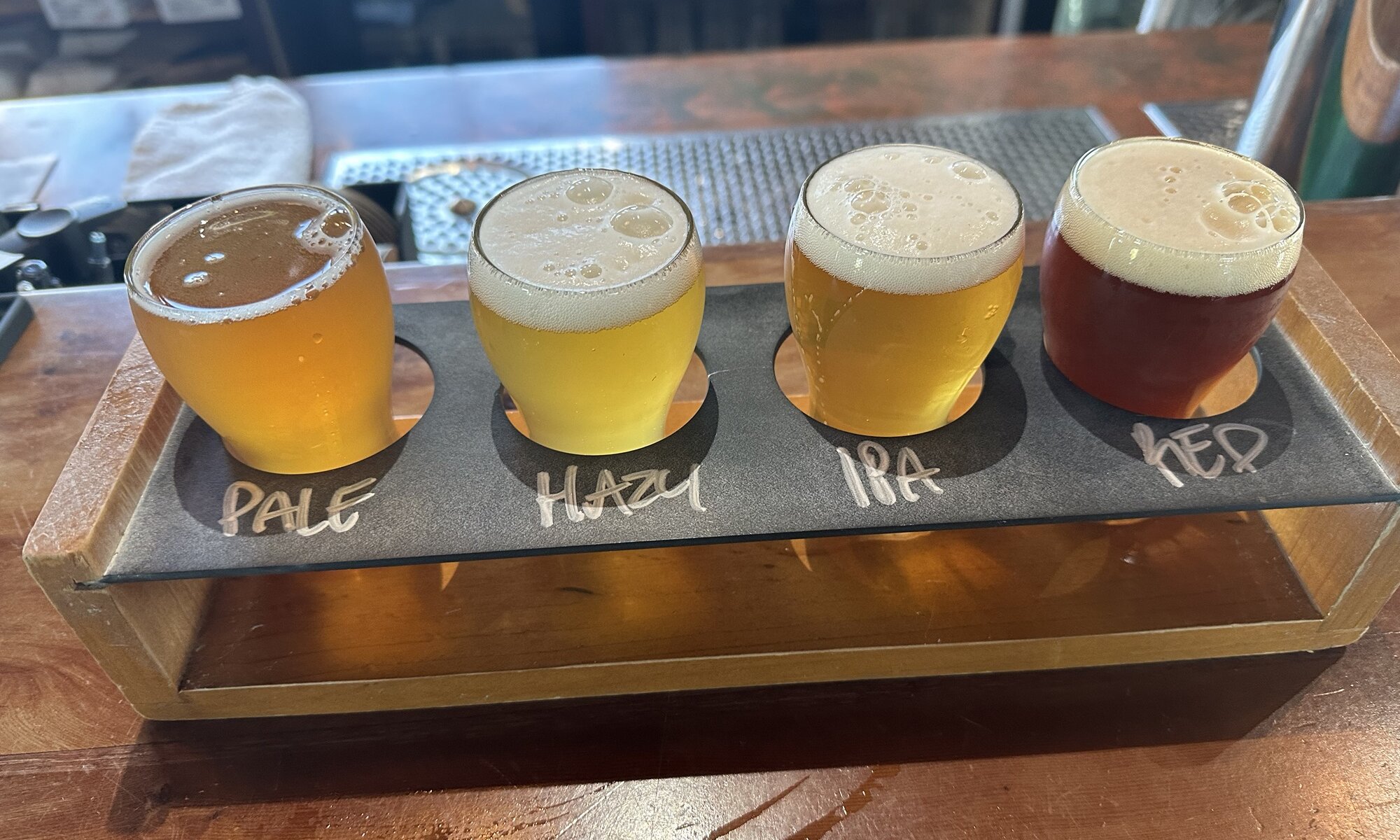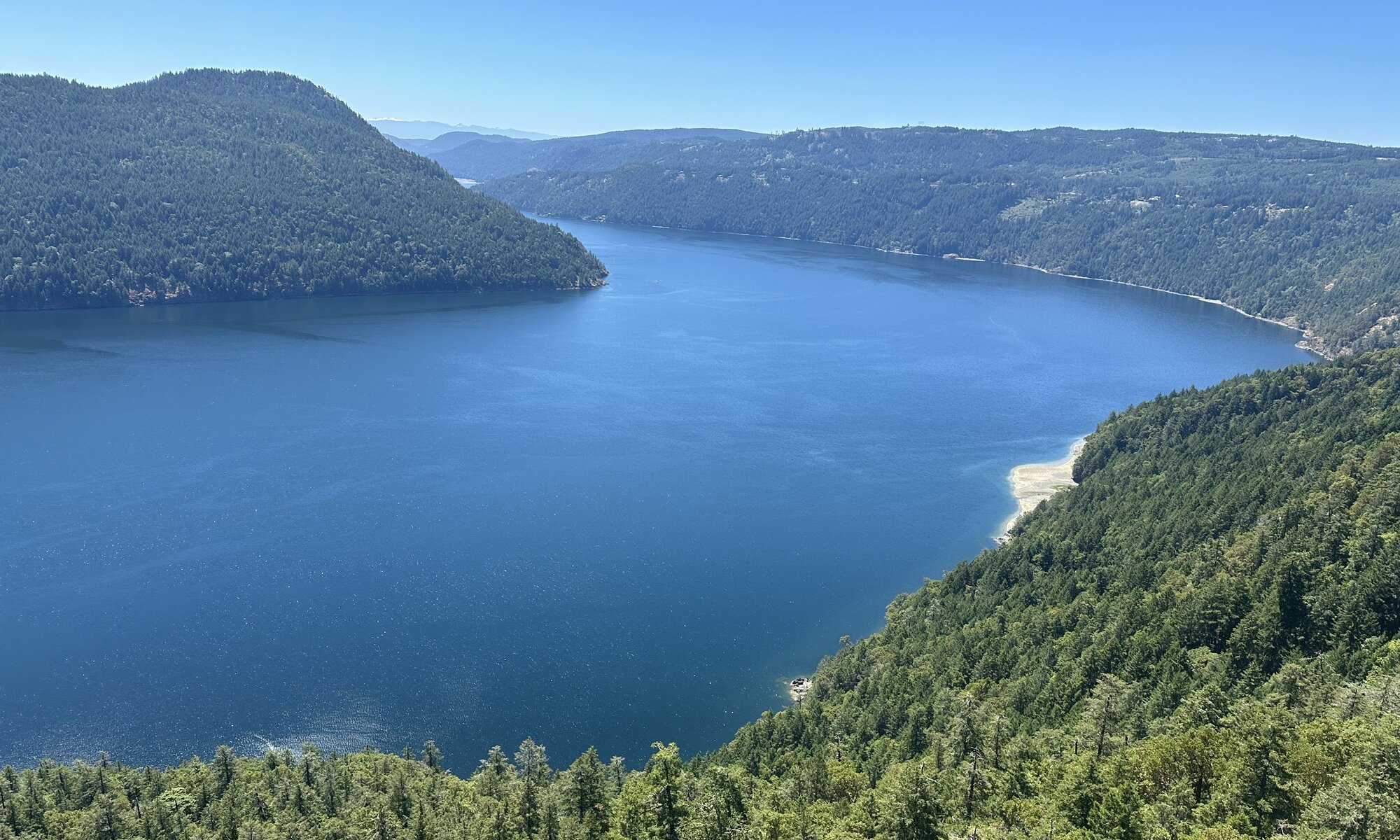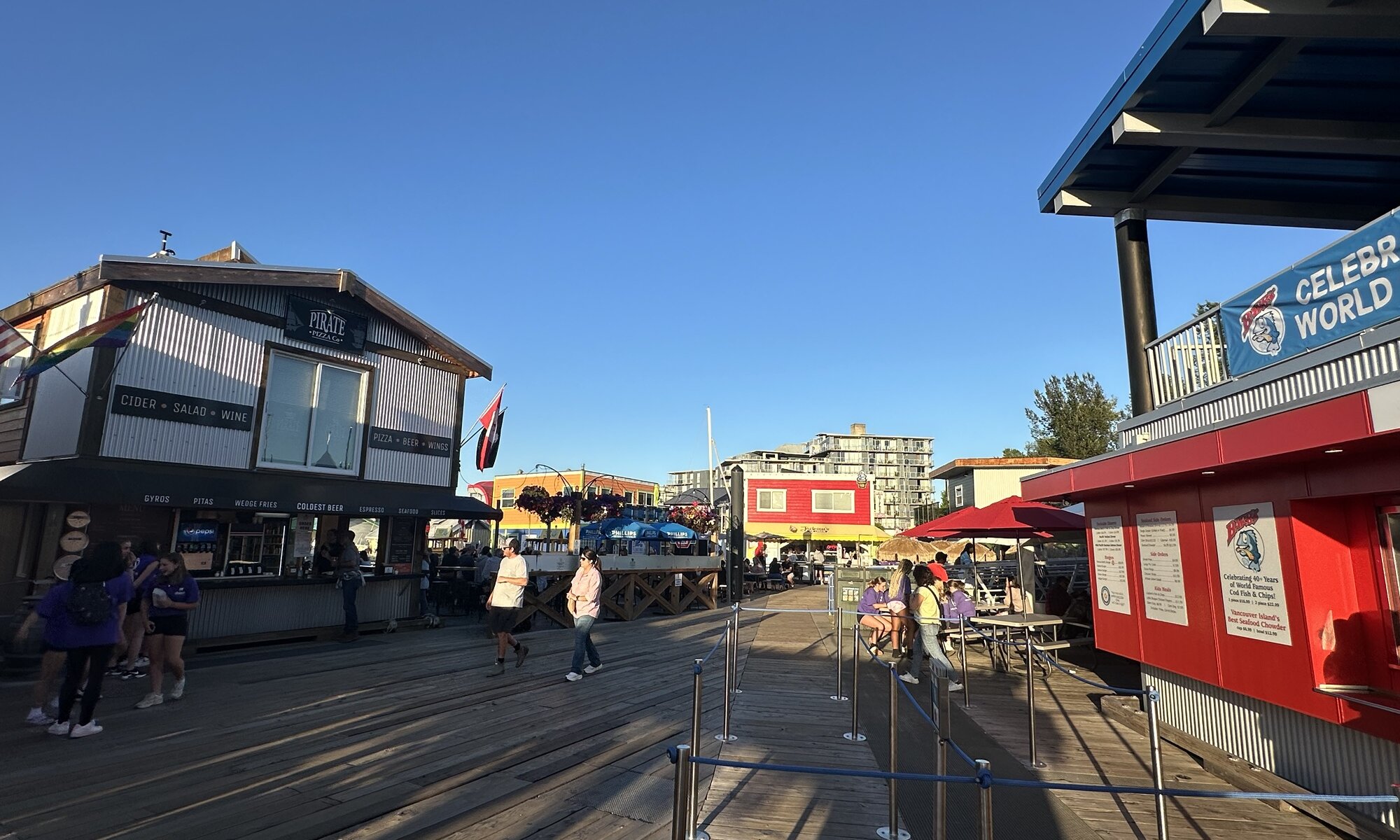Cathedral Grove is a nice stop next to the road passing the MacMillan Provincial Park near Nanaimo on Vancouver Island. It is a wonderful old-growth forest that showcases some of the most majestic Douglas fir and red cedar trees in British Columbia. Some of these ancient giants are over 800 years old, reaching heights of 75 meters and diameters of nearly nine meters. The grove features a network of well-maintained (often wooden) walking trails that wind through the towering trees, allowing visitors to experience the serene beauty of the temperate rainforest up close.
Continue reading “Cathedral grove”Beach hopping
The Pacific Rim National Park is a wonderful place on Vancouver Island with many different beaches you can try out. A road and cyclist path connect them from Ucluelet until Tofino and thereby make them easily accessible. You’ll find paid parking areas in all these places, but there is one pain: you can only pay by app and connectivity via the mobile network is sometimes bad. The best beach in my opinion is Tonquin beach near Tofino.
Continue reading “Beach hopping”Pacific rim
On the west coast of Vancouver Island you can discover the Pacific Rim National Park Reserve, a stunning natural destination known for its rugged coastline, lush temperate rainforests, and rich cultural heritage. The park is divided into three main areas: Long Beach, the Broken Group Islands, and the West Coast Trail. Long Beach, the most accessible and popular section, boasts expansive sandy shores, powerful waves ideal for surfing, and scenic trails through old-growth forests.
Continue reading “Pacific rim”Lighthouse
The Lighthouse Loop is a stunning section of the Wild Pacific Trail in Ucluelet, British Columbia, offering breathtaking views of the rugged coastline and the open Pacific Ocean. This 2.6-kilometer loop winds through windswept forests and rocky bluffs, leading to the historic Amphitrite Lighthouse, which has guided mariners since 1915. Doing the full round takes 45 to 60 minutes. The loop is easy to do, sometimes there is some inclination but everywhere you’ll find benches to sit down and relax.
Continue reading “Lighthouse”Rainforest
The Rainforest Trail near Ucluelet offers an immersive experience in the lush, temperate rainforests of Vancouver Island. Located within the Pacific Rim National Park Reserve, this scenic trail consists of two looped boardwalk paths winding through towering old-growth cedars and western hemlocks, draped in moss and surrounded by dense ferns. The trail provides a peaceful and enchanting atmosphere, with interpretive signs along the way that highlight the region’s rich biodiversity and ecological significance.
Continue reading “Rainforest”Black Rock
The best hotel on my trip to Western Canada was the Black Rock Oceanfront Resort at the tiny little town of Ucluelet on Vancouver Island. Its main building is located directly at the shore of the Pacific Ocean (remember, the next country on the other side is Japan) and you’ve got great views from your balcony to the rocks and the sea. The hotel contains a nice bar and a very good restaurant (a reservation upfront is needed) which also serves high-class breakfast in the morning: on a terrace with views on the sea.
Continue reading “Black Rock”Canadian Kölsch
Ucluelet is a picturesque coastal town on the west coast of Vancouver Island in British Columbia, Canada. Known for its rugged shoreline, rich Indigenous heritage, and proximity to the Pacific Rim National Park Reserve, Ucluelet attracts visitors seeking outdoor adventure and breathtaking scenery. The town offers world-class hiking along the Wild Pacific Trail, storm watching in the winter, and excellent opportunities for fishing, kayaking, and wildlife viewing. With a thriving arts community, cozy accommodations, and fresh seafood, Ucluelet provides a more tranquil alternative to its popular neighbor, Tofino, while still offering an authentic West Coast experience.
Continue reading “Canadian Kölsch”Malahat Skywalk
On the grounds of the Malahat First Nation near Victoria on Vancouver Island you can discover a large wooden tower, the Malahat Skywalk. It gives you great views on the Saanich Inlet, the surrounding forests and you can even look over into the United States of America – the border is very close and you can’t overlook Mount Baker in the state of Washington. To get on top of the tower you can follow a very long ramp that is winding up inside. If you’re brave you can get down very fast by using a slide.
Continue reading “Malahat Skywalk”Fisherman‘s Wharf
Enjoying some fresh seafood at Victoria is easy and possible in multiple locations. A good one which also adds different other cuisines and the possibility for shopping crafted items is Fisherman’s Wharf: restaurants, bars and shops floating in the harbor of the city. You can find it one kilometer west of the Legislative Assembly of British Columbia.
Continue reading “Fisherman‘s Wharf”Bear Country
The province British Columbia has the abbreviation BC, but these two letters can also be read in a different way: as Bear Country. That’s what British Columbia is. When hiking on Vancouver Island or up to the Yellowhead Mountain there are typically two potential threats: cougars and bears. While cougars and wolves are mostly shy and invisible, you’ll meet bears quite frequently; black bears more often than grizzly bears. On Vancouver Island alone there are around 7,000 of them and knowing how to react and which precautions to take is a must.
Continue reading “Bear Country”
